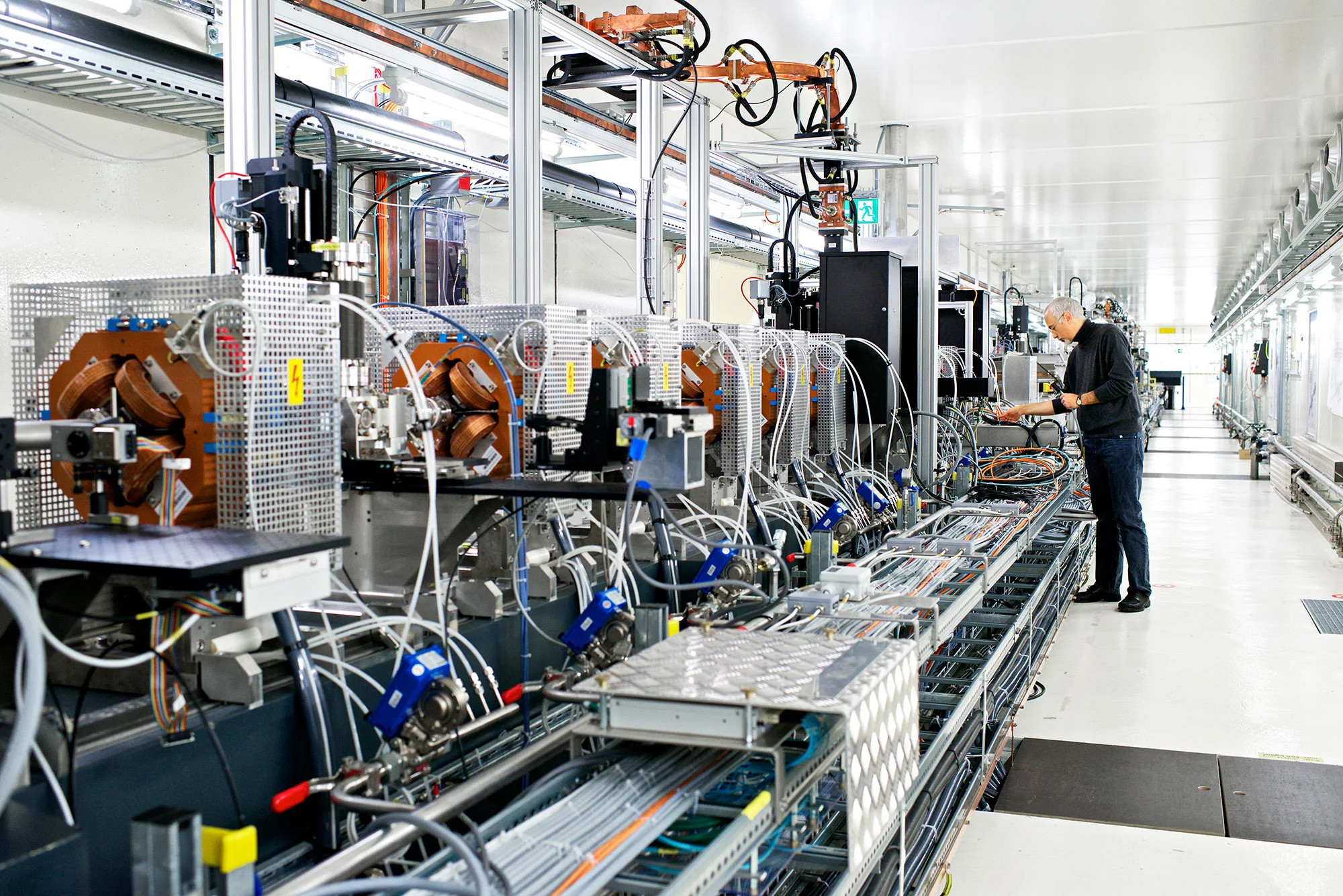The electron beam for SwissFEL will be generated in an electron source. The demands of this component are very high: in order for the SwissFEL to be operated successfully, the electron beam must be of the highest quality from the very beginning.
The very first part of the SwissFEL facility is the electron source. The most important components of this are a metal plate and a laser that generates light pulses of ultraviolet light. The laser will be directed at the metal plate, and a bunch of electrons will be ejected from the plate with every light pulse. These electrons will immediately be accelerated in the first high-frequency cavity – a specially shaped cavity in which an electric field can build up to accelerate the particles to almost the speed of light. From there, the electrons fly on to the actual accelerator.
The characteristics of the electron source are crucial for the functioning of the whole facility. If the electron pulses generated here are not "good enough", then this cannot be corrected further along their path and may lead to the situation that the X-ray light pulses needed for experiments cannot be generated at all. The only solution then would be to make the whole facility longer, in order to increase the beam energy. Electron bunches are "good" when the electrons in them give in as little as possible to their urge to move apart, which means that they all travel as much as possible in exactly the same direction and remain densely packed. In this case, specialists describe the beam as having a "low emittance".
Additional information
- SwissFEL – The facility: http://www.psi.ch/media/swissfel-the-facility

